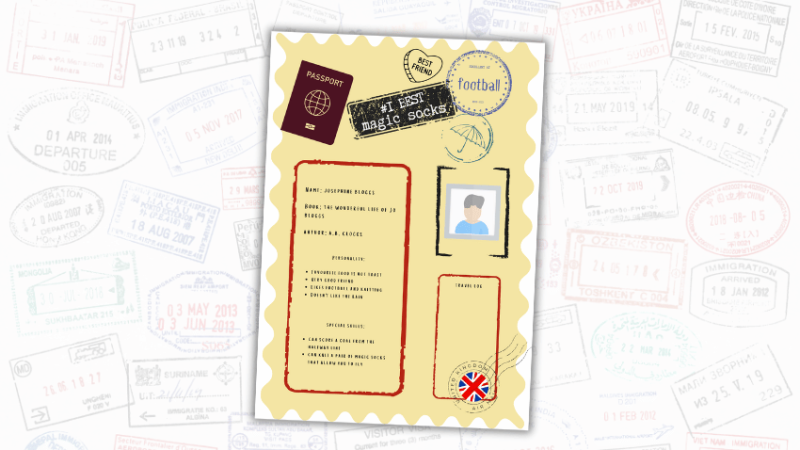10 imaginative book topics based on adventures at sea

Sublime and mysterious, the ocean plays host to countless magical children’s stories…

- by Carey Fluker Hunt
- Creative learning consultant, writer and former teacher Visit website

Set sail with Carey Fluker Hunt and discover some of the very best for inspiring classroom creativity.
1. Sea of Dreams by Dennis Nolan (Roaring Brook Press)

What’s the story? A girl builds a sandcastle. As the sun sets and the tide comes in, she leaves the beach. Then, just as the first wave breaks over the battlements, a light comes on in the castle window… Every spread in this glorious picturebook has the potential to inspire dramatic storytelling. Collectively the illustrations create an almost cinematic experience with a narrative energy that can’t be ignored.
Thinking and talking Who are the people in the sandcastle, and how did they come to be on the beach? Talk about what you would see and do if you could enter the castle. What would you bring to life, if you could? And what would happen next?
Try this • Find some ‘tiny environments’ and imagine how they’d look to their inhabitants. Use various small-world figures to populate an outdoor space. Take some photographs, map the area, draw what you can see and tell stories about it. Find pictures of seaside scenes and add drawings of tiny people having adventures.
• Tell the story from the point of view of the boy who falls into the water.
• Design sandcastles, using pictures of real castles for inspiration. What would you put in a sandcastle, if you were going to live in it? Try making castles from sand and other materials
2. Lost and Found by Oliver Jeffers (Harper Collins Children’s Books)
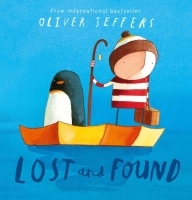
What’s the story? When a penguin turns up on your doorstep, what do you do? Take him to the South Pole in a rowing boat, of course. But what if the penguin isn’t lost, just lonely? This is the story of a friendship, told simply and with great style.
Thinking and talking Why do you think the penguin likes the boy? What should you do to be a good friend, and why is friendship important? What kind of stories does the boy tell the penguin? Which stories do you prefer, and why?
Try this • What do you think the boy and the penguin talked about? In pairs, roleplay their conversation. When you’ve worked out the best version, write it down and illustrate it.
• Find a toy penguin and an umbrella for him to sail in. Write or draw the penguin’s thoughts on giant thought bubbles. Can you design a better boat? Build one using junk materials and test it on water.
• Look at the storm picture. What can the boy see, hear and smell? Create a soundscape by making ‘stormy sea’ noises and record it. Explore paint and other media to create a picture of a stormy sea while listening to your soundscape.
3. Wave by Suzy Lee (Chronicle Books)
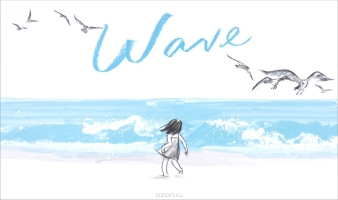
What’s the story? A girl plays on a beach, making fun of the waves. There’s an invisible barrier between them, so they can’t touch her. Or can they? To the delight of her audience, Suzy Lee uses the ‘gutter’ of this wordless picturebook to establish a rule and break it. This book will appeal to children who enjoy responding kinaesthetically and will inspire retellings and performances of all kinds.
Thinking and talking Talk about a visit to the beach or swimming pool. What games do you play? Mime them and let others guess. How should you stay safe near water?
What do you think about the colours Suzy Lee uses? How do they make you feel? Would different colours change your mood? Retell the story from the girl’s perspective, then the wave’s. How do they differ?
Try this • Pretend to make faces at waves, then run away. Work together to move like a wave. Create a soundtrack using your voices and/or percussion instruments, or find some appropriate music and perform a wave dance.
• Explore the colour blue using different media and create some watery, wavey pictures. Find out about gulls, then watch some birds in your school grounds. How are they similar and how are they different?
• Invent a ‘wave-creepingup- on-a-girl’ version of the Grandmother’s Footsteps game and test it. Agree on the rules, then write instructions for another class on how to play.
4. The Snorgh and the Sailor by will Buckingham and Thomas Docherty (Alison Green Books)

What’s the story? One night, as a storm rages, a sailor washes up at the snorgh’s house and starts telling him a story. The snorgh – who doesn’t like company – stomps off to bed. By morning, the sailor’s gone. The snorgh realises that he has to hear the end of the story, and sets off in pursuit. Ignoring sea monsters, whirlwinds and deserted islands, he finds the sailor, only to discover that in fact, he’s been creating another story all along.
Thinking and talking Do you believe the snorgh when he says he doesn’t like adventures? What can you find in the pictures or story to help you answer this? Do you think the snorgh will be happier at sea than he was on land? What makes you happy, and why?
Try this • What happens to the snorgh and the sailor when they leave the island? Use the line drawings to tell the next chapter of their story, and then share it with your classmates.
• Look at some old seafaring maps and use them to help you draw one of your own, showing the snorgh’s adventures.
• In pairs, invent a new seaside character and an unlikely friend for him. Roleplay their conversation, then draw your characters and write about them.
5. The Pirate Cruncher by Jonny Duddle (Templar)
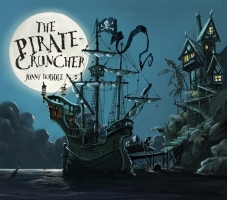
What’s the story? There’s a stranger in town and he’s tempting the pirates with promises of treasure. But ‘free’ money usually comes with strings attached – and the Fiddler’s strings are being pulled by something very large and very hungry! This busy picture book offers a hugely entertaining romp through pirate territory that’s familiar, but presented here with real style and substance.
Thinking and Talking There are many clues about what’s really happening in this book. Can you find them? Who or what is the Fiddler, and who’s controlling him? Look at the way Jonny Duddle divides his pages (full spread, or smaller images?) and his viewpoint (where would the camera be if this book were a film?). Talk about how this helps him tell his story and how it makes you feel as a reader.
Try this • Look at the ‘pirates in hammocks’ spread. Write what they’re thinking, then blank out the bubbles and draw different thoughts for them. Create a sea monster of your own to replace the lower part of the pull-out spread.
• How many small-world figures can you load onto a model boat before it sinks? Is there a technique to it? Can you modify the boat in any way to improve your score? Use your data to create graphs and infographics.
• Set up a pirate recruiting office, complete with job adverts, information about pay and conditions and application forms. Roleplay a recruiting officer interviewing a pirate for a job (all paperwork to be filled in correctly, of course), then write a letter offering the position, or explaining why it’s refused.
Browse more ideas for Talk Like a Pirate Day.
6. One Smart Fish by Chris Wormell (Red Fox Picture Books)

What’s the story? Long ago, when the world was young and nothing walked upon the land, a dull-looking fish had a bright idea. He’d already invented chess, created some artworks and entertained his friends with songs and plays, so it shouldn’t have come as a surprise. But a fish, walking up the beach, on feet? No wonder the others were so amazed!
Thinking and talking Look at the spread showing the fish on holiday. What are they doing; how are they entertaining themselves? And why does the sign say ‘Danger, shallow water? What do you think the colourful fish are thinking when the smart fish walks up the beach? What impossible thing would you like to do, and why?
Try this • Create an enormous collaborative underwater frieze. Use a board and some shells to play chess – or perhaps you could even invent a new game for the Smart Fish!
• Look at the tree diagram and identify the creatures. Why don’t you recognise some of them? Talk about change (evolution) and the consequences of not changing (extinction). Find out about fossils, the first amphibians and dinosaurs.
• Imagine you’ve invented wings. Where would you go? Make your own wings out of fabric or paper, and decorate them.
7. Manfish: The Story of Jacques Cousteau by Jennifer Berne AND Eric Puybaret (Chronicle Books)
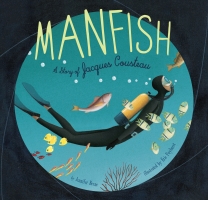
What’s the story? Manfish tells the story of groundbreaking diver and film-maker Jacques Cousteau and the questions that fascinated him as a child. Why can’t a person breathe like a fish? Could I make an underwater film? And how can we protect the sea? In this book, words and pictures complement each other to create biographical non-fiction with a difference.
Thinking and talking
Was Cousteau an ordinary child, or was he unusual? How did he become an inventor? Which illustration do you like best? Why do you think some of them are round, while others are drawn in vertical strips?
Try this • Together, create a mural showing a cross section from shallow water to deep-sea trenches. Populate with drawings of creatures in their natural habitat and write about them.
• Watch a film by Cousteau, then take masks and snorkels to your local pool and investigate. What kind of suits and equipment do modern deep-sea divers use? Compare with the equipment available when Cousteau was young.
• “You can’t build what you can’t imagine….” Talk about problems that need solutions. Choose one problem and dream up different ways to solve it, then present your ideas to the class. You might need to draw pictures, make models or act something out to get your message across – which can be as wild and imaginative as you like!
8. Shackleton’s Journey by William Grill (Flying Eye)
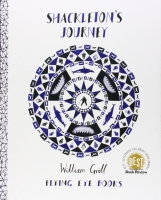
What’s the story? With its epic struggles, heartbreaking losses and heroic leadership, the story of Shackleton’s expedition has become the stuff of legend. In this absorbing picture book, Grill presents the facts behind that legend, marrying attention grabbing text with pared-down illustrations evoking the harsh, cold beauty of the frozen South. Grill’s stylish page designs and minimal colour palette make this a sophisticated read.
Thinking and talking What has this book told or shown you about the Antarctic that you didn’t know or understand before? What did Shackleton and others do to keep everybody safe and well despite the challenges? What makes a good leader, do you think? What do you think about the way Grill chose to illustrate this book?
Try this • Draw a picture of everyone in your class on a single page, and label with the jobs they’d have chosen if they’d been part of Shackleton’s expedition.
• Use a measuring jug to investigate the expansion of water as it freezes, or float ice cubes and time how long they take to melt at different temperatures. Why do icebergs float? Freeze something crushable in a closed container full of water and observe what happens. What did Shackleton do to protect the Endeavour from the ice?
• Inspired by Grill’s minimal style, draw a map of your local area. Who might want to explore it, and for what reasons? Create an imaginary diary written by the expedition’s leader.
• Research another expedition or environment (an Apollo mission? the Amazon?) then write and illustrate some spreads for a non-fiction picturebook inspired by Grill.
9. Flotsam by David Wiesner (Andersen Press)

What’s the story? A boy discovers an old-fashioned camera on a beach. The photos, once developed, tell an incredible story of starfish islands and underwater aliens, and link him to children across the globe. Combining beautifully detailed, full page spreads with graphic novel style action frames, this wordless and sophisticated picturebook encourages children to notice, question and invent.
Thinking and talking How do we know which images are photos taken by the camera, and which are not? Look at the underwater photos. Which do you like best, and why? Look at the photos of children who found the camera. Why are they holding pictures of each other, and what’s the significance of the numbers? Why do you think the final pictures are in sepia rather than colour?
Try this • Borrow an old-fashioned camera. Sketch it, make diagrams and find out how it works. Light-sensitive paper will help your class understand film-based photography (or you could make a pinhole camera). Find some Edwardian portrait photographs and create characters and stories for the people featured.
• Find out about the oceans of the world and the creatures that live in them. How are ocean currents formed, and how do they transport flotsam (like the camera) around the world? Find out about jetsam, and about how our oceans are threatened by pollution
• Create some new imaginary underwater scenes, in a medium of your choice, or write a story to accompany one from the book.
10. The Little Ships: A Story of Heroic Rescue at Dunkirk BY LOUISE BORDEN AND MICHAEL FOREMAN (Frances Lincoln)
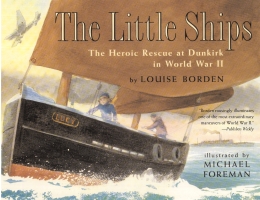
What’s the story Louise Borden’s prose poem about the ‘disaster and miracle’ of Dunkirk brings the heroic WWII rescue of soldiers stranded on French beaches vividly to life. Told through the eyes of a girl who joins the convoy in her father’s fishing boat, this is an arresting and imaginative introduction to a real event. Michael Foreman’s evocative illustrations match the mood of the narrative perfectly.
Thinking and talking Why does the girl dress as a boy? What does she see and experience during her journey? Does it change her? How? There are lots of jobs to do on board the Lucy. List the peacetime tasks, and compare them with the wartime ones. Collect words for different types of boat, and look for examples of military imagery and language.
Try this • How does Michael Foreman recreate the colours and textures of the sea? Use watercolours and experiment. Once you’ve painted a seascape, find out about historical naval battles. Research one, then draw some historically-accurate boats to populate your scene.
• There’s an extract from Churchill’s post-Dunkirk speech at the back of this book. Listen to a recording. In The Little Ships, the girl says “I was glad Mr Churchill didn’t keep his words in his hands and in his eyes, in the way of Deal fishermen.” What does she mean? What makes a good speech? Have a go at writing and performing one about something that matters to you.
Carey Fluker Hunt is a freelance writer, children’s book ambassador and creative consultant. Browse more World Ocean Day activities.



